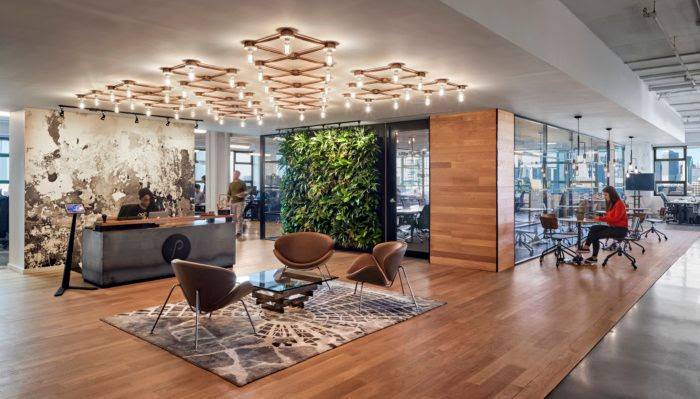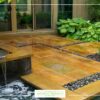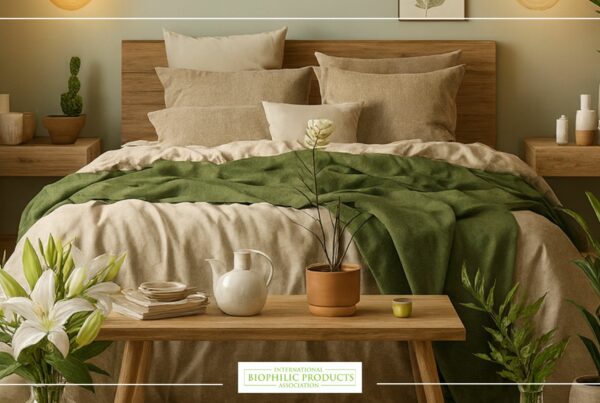
Bringing nature indoors
“Biophilic design can reduce stress, enhance creativity and clarity of thought”
Biophilic design is so much more than just adding a few potted plants to your office.
It’s an approach to architecture that aims to connect people in buildings with the natural world. If you’ve ever felt instantly calmer when looking at a lush garden or gazing at the ocean, you already know how powerful nature can be.
Biophilic design architecture brings these rejuvenating experiences into the places we live and work, improving our well-being, productivity, and overall happiness.
This article will explore how biophilic design works, why it matters, and how it can transform interiors, exteriors, and entire communities. Additionally the article will address common questions about this approach—including its advantages, disadvantages, and exciting biophilic design architecture examples.ntially evolve into loyal customers.
Understanding biophilic design in architecture

Biophilic design in architecture revolves around creating spaces that mirror natural environments. This can include something as simple as leveraging natural light and ventilation or as elaborate as constructing entire walls of greenery.
The beauty of biophilic architecture is that it doesn’t have to be complicated; even small touches—like wood accents, water features, or open views to a garden—can have a huge impact.
One famous concept for architects and designers in the field is the 14 patterns of biophilic design articulates the relationships between nature, human biology and the design of the built environment so that is may experience the human benefits of biophilia in our design applications, which detail ways to incorporate elements like natural materials, dynamic lighting, and organic shapes into our built environment. By applying these patterns, architects tap into our innate desire to feel connected to nature.
The architecture biophilic design concept in action
Biophilic architecture dase study
When we talk about the architecture biophilic design concept, we’re referring to the idea that our surroundings directly affect our mood and health. Studies have shown that exposure to nature (or representations of nature) can reduce stress and sharpen focus. This is why businesses, hospitals, and schools around the world are eager to adopt biophilic design principles, think large windows to capture daylight, living walls that purify the air, and indoor gardens that boost emotional well-being.
One well-known biophilic architecture case study is the Amazon Spheres in Seattle, US. These glass-domed conservatories are packed with thousands of tropical plants, making the workspace feel more like a rainforest than a corporate office. The result? Employees report feeling more creative and engaged while surrounded by vibrant greenery.
Biophilic design architecture characteristics
Biophilic design architecture embraces several key characteristics:
- Natural Elements: incorporating plant life, water features, and natural materials like wood, stone, or bamboo.
- Abundant Light: maximizing exposure to natural daylight, which helps regulate our internal clocks and boosts mood.
- Organic Shapes: favoring curved lines, asymmetrical layouts, and forms found in nature (like spirals or leaf-inspired motifs).
- Air Flow & Ventilation: prioritizing fresh, clean air circulation—this could be through open windows or systems designed to bring in outside air.
- Views of Nature: designing buildings so that occupants can easily see gardens, trees, or landscapes from indoors.
Learn more about biophilic design architecture characteristics
These biophilic design architecture characteristics help occupants feel more relaxed and harmonious in their environment, improving both mental and physical well-being.
Biophilic interior design
The principles of biophilic design don’t just apply to building facades. Biophilic interior design is about creating indoor spaces that echo natural settings. You might see:
Green Walls: Walls fully or partially covered with living plants.
Water Elements: Indoor fountains or aquariums that provide a sense of calm.
Natural Textures: Furniture and décor featuring wood grains, bamboo, hemp, or rattan.
Nature-Inspired Colors: Palettes featuring earth tones, ocean blues, and leafy greens.
Biophilic interior design makes it easier for people to feel connected with nature, even in city centers or busy commercial areas.
Biophilic design architecture examples
Here are a few inspiring examples that showcase the power of biophilic design architecture:
Singapore’s Changi Airport: Lush indoor gardens, waterfalls, and open-air decks turn this busy travel hub into a calming nature retreat.
Bosco Verticale in Milan: These residential towers feature vertical forests, providing fresh air and a stunning natural aesthetic.
Pasona Urban Farm in Tokyo: An office building where employees can grow and harvest veggies as part of their daily routine.
Each of these biophilic design architecture examples demonstrates how integrating greenery and natural elements into buildings can revolutionize the way we experience space.
How biophilic products can help
Looking to bring more nature into your architectural or interior design projects?
International Biophilic Products Association comes in. From custom planters to living walls, specialized materials, and designs that harness natural light, Biophilic Products offers various solutions that help you merge nature with the built environment.
By partnering with experts in biophilic design, you can enhance your property’s look and feel, support wellness, and even boost property value.
Whether you’re looking to improve an office, hospital, school, or retail space, biophilic design architecture offers incredible benefits. It taps into our instinctual bond with nature, providing mental and physical health advantages while also contributing to sustainable, eye-catching designs. From small steps like adding potted plants to large-scale projects like living walls and vertical forests, the possibilities are endless.
For more insight on how to transform your space through architecture biophilic design, head over toInternational Biophilic Products Association and explore the solutions that can bring nature indoors in innovative and inspiring ways.
Common Questions (FAQ) about Biophilic Design
What are the main elements of biophilic design
The main elements include natural materials (like wood and stone), abundant daylight, water features, vegetation, and organic shapes. Proper ventilation and visual access to nature are also crucial.
Who is a famous biophilic architect?
One prominent figure is Stefano Boeri, known for his “Bosco Verticale” (Vertical Forest) project in Milan. Another notable architect is Thomas Heatherwick, recognized for designs that incorporate plant life and unique organic forms.
What are the techniques of biophilic architecture?
Techniques range from installing green roofs and living walls to ensuring buildings have plenty of windows for natural light. Designers also use natural ventilation, organic shapes, and color palettes derived from natural environments.
What are the disadvantagens of biophilic design?
While there aren’t many drawbacks, cost and maintenance can be factors. Living walls, for instance, require irrigation and upkeep. Some projects might have higher upfront costs, but they often pay off in the long run through energy savings and occupant well-being.











13 Comments